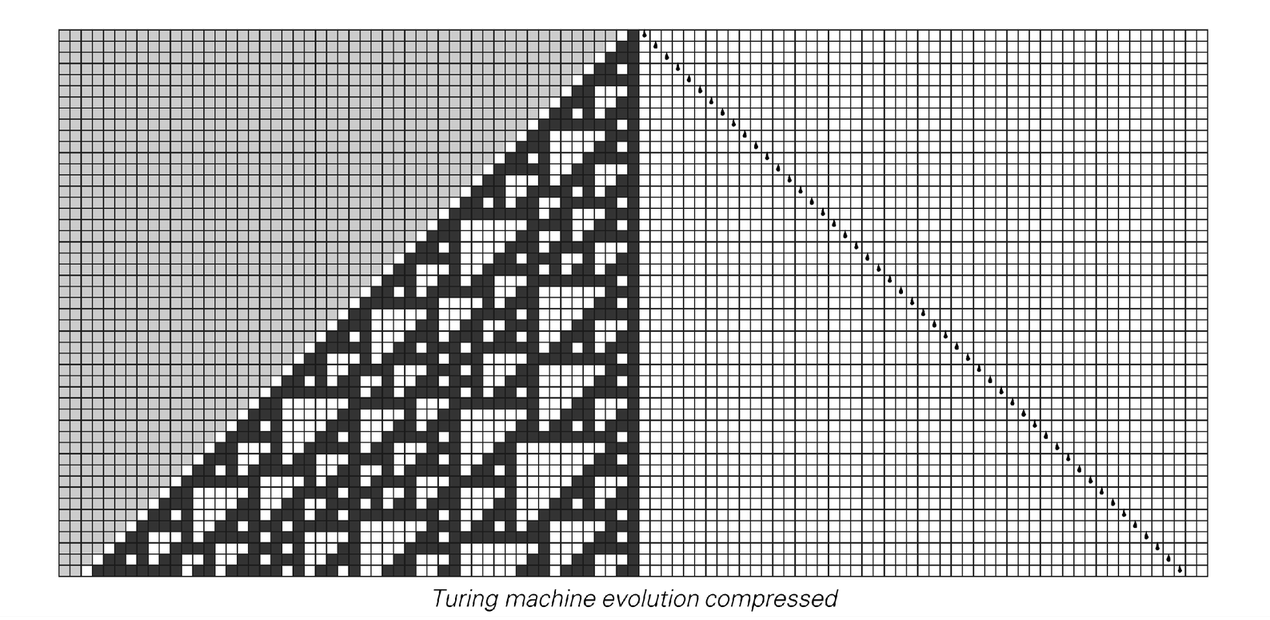The picture at the bottom of the facing page shows how universality can be proved in this case. The basic idea is that by setting up appropriate initial conditions on the left, the Turing machine can be made to emulate any tag system of a certain kind. But it then turns out from the discussion of page 667 that there are tag systems of this kind that are universal.
It is already an achievement to find a universal Turing machine as comparatively simple as the one on the facing page. And indeed in the forty years since this example was found, no significantly simpler one has been found. So one might conclude from this that the machine on the facing page is somehow at the threshold for universality in Turing machines.
But as one might expect from the discoveries in this book, this is far from correct. And in fact, by using the universality of rule 110 it turns out to be possible to come up with the vastly simpler universal Turing machine shown below—with just 2 states and 5 possible colors.

The rule for the simplest Turing machine currently known to be universal, based on discoveries in this book. The machine has 2 states and 5 possible colors.


An example of how the Turing machine above manages to emulate rule 110. The compressed picture is made by keeping only the steps indicated at which the head is further to the right than ever before. To get the picture shown requires running the Turing machine for a total of 5000 steps.



